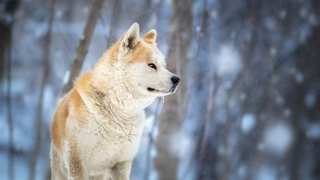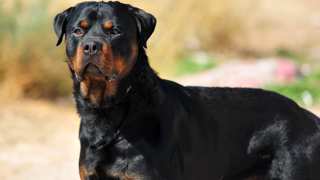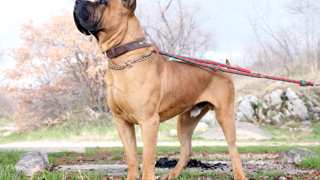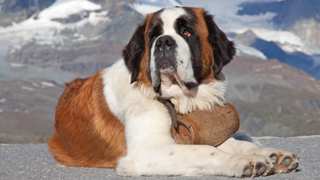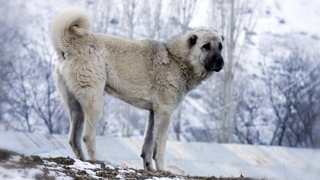As giant-sized dogs, so too are Tibetan Mastiff food requirements. These dogs can eat a lot of food--and they're peculiar in their protection of it. (More details can be found below.) They aren't extremely active, so the Tibetan Mastiff diet doesn't need to contain huge amounts of animal proteins and carbs like the diets of more energetic breeds. But TMs are more primitive in their physical makeup than most dog breeds, so breeders and experts believe a diet of raw/fresh foods (including lean meats, fresh vegetables and fruits, eggs, fish, and other natural foods) is best for these dogs. If you find such a diet to be inconvenient and expensive for your TM, premium dry food is another good choice--but try and mix some raw/fresh ingredients in with at least one meal per day. Do not feed your TM only cheap, "store-brand" dog food, as it simply won't contain enough nutrients to keep the dog healthy.
Some interesting notes about Tibetan Mastiff feeding: first, this breed is highly prone to bloat, which occurs when a dog eats its food too fast. Make sure to feed your TM two meals per day instead of one, and keep an eye on how fast the dog eats. But be very careful about approaching a Tibetan Mastiff while it's eating! Dogs of this breed are extremely territorial about their food, and tend to guard their food bowls very aggressively. When your TM finishes eating, it's a good idea to call the dog into another room so you can safely put the bowl away.
If you feed a raw/fresh diet, your TM will need 1-2% of their body weight in food per day, divided into two meals (or three meals for a puppy nine months old or younger) per day. A 110-pound adult TM, for example, will need two meals of ¾ pound each of fresh food. If premium dry food is your preference, an adult will need about five cups per day, divided into two meals; puppies will need about three cups per day, divided into three meals until they're nine months old. It's recommended that you establish a consistent feeding schedule for your TM so the dog gets used to eating at the same time every day--and pick the bowl up once the dog is done rather than leaving it on the floor. For more detailed feeding info, see this Tibetan Mastiff diet chart (and for the sake of simplicity, portions are for dry food only):
Tibetan Mastiff Feeding ChartDog AgeDog WeightFood TypeAmountFrequency2 Months12 lbsDry (Puppy formula)0.5 cups3x/day3 Months20 lbsDry0.6 cups3x/day6 Months50 lbsDry1 cup3x/day9 Months75 lbsDry* (Puppy/Adult)1.75 cups2x/day12 Months95 lbsDry (Adult formula)2 cups2x/day15 Months+110 lbsDry2 cups2x/day*--Around this time, transition to adult food by mixing in a little adult formula with the puppy formula. Over the course of a week, with each meal add more adult food to the mix until the dog is eating it entirely.
As a fairly low-energy breed, a TM will quickly gain weight if over-fed, leading to joint, breathing, and digestive problems, not to mention a shortened lifespan. You can control your TM's weight by establishing consistent feeding and exercise schedules and by not feeding the dog table scraps. And again, it's best to pick up the TM's food bowl after meals instead of leaving it on the floor.
If you're worried your TM is overweight, give the dog this simple test: run a hand along its side, and if you can't feel any ribs, it's diet time. Decrease the dog's daily food consumption by one-fourth, and add an extra walk or play period to its daily exercise schedule.


